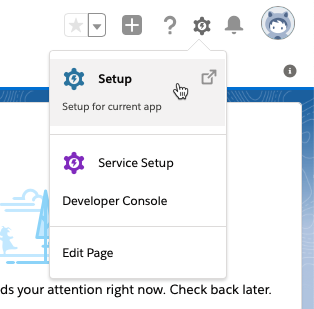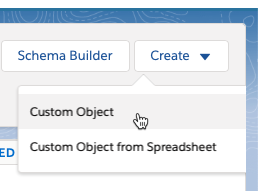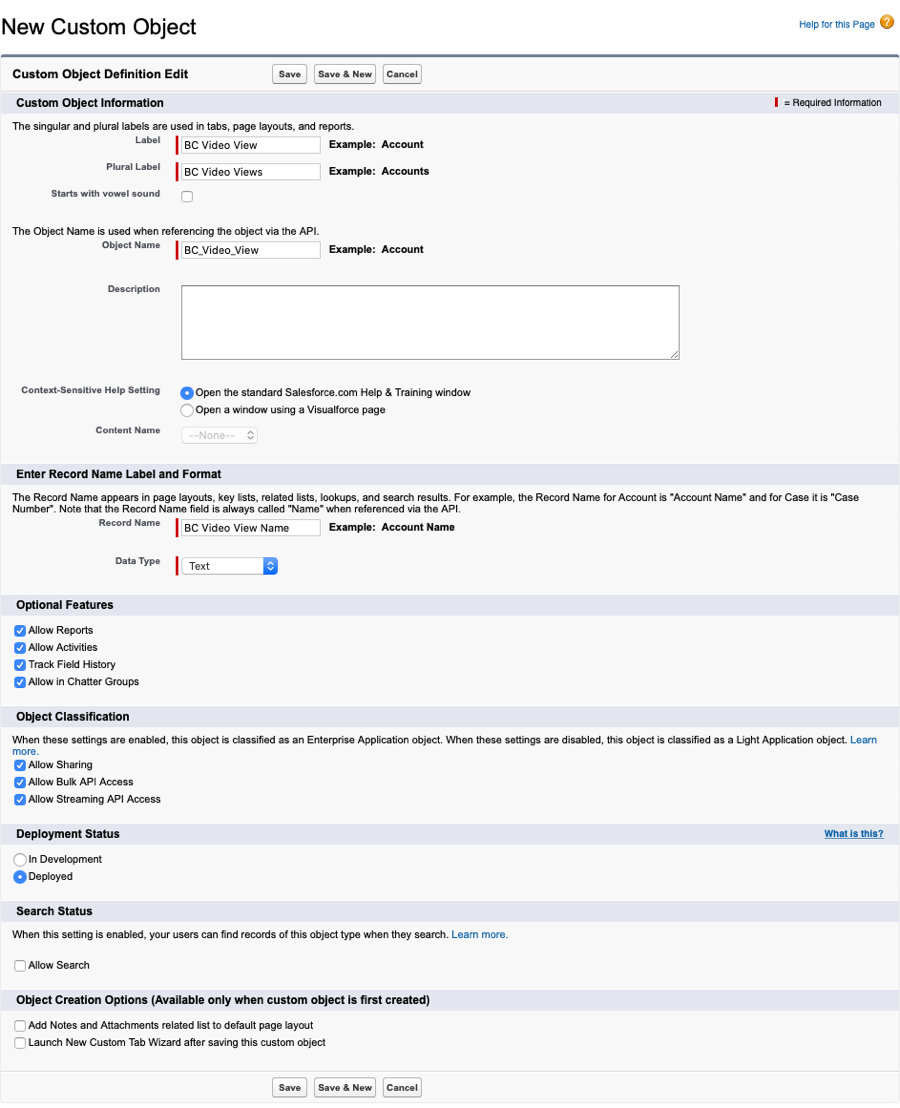Creating a custom object
Contacts are the users whose behavior you wish to track or keep records in Salesforce. There should be a relationship between the custom object that is created below and the Contact object in Salesforce in order to get data related to the correct user. To create this custom object, follow these steps:
- Login to Salesforce.
- Click on the gear icon in the top right corner to open the Setup menu.

- In the left navigation, in the PLATFORM TOOLS section, click Objects and Fields > Object Manager.
- At the top of the Object Manager page, click Create > Custom Object.

- Enter a Label. Brightcove recommends using
BC Video View. - Enter a Plural Label. Brightcove recommends using
BC Video Views. - Enter an Object Name. An initial value will be generated based upon the Label value.
- Enter a Record Name. An initial value will be generated based upon the Label value. Confirm the Data Type is Text.
- Select any Optional Features.

- Click Save.
- On the Custom Object Detail page, locate the Custom Fields & Relationships section.
- Click New.
- Create the following custom fields. For all fields, set the Data Type to Text and keep the default field-level security and page layout options.
Field Label Length Field Name Video ID 200
Video_ID
Player ID 200
Player_ID
Page URL 200 Page_URL Time Stamp 200 Time_Stamp Total Time Watched 200 Total_Time_Watched Percentage Watched 200 Percentage_Watched - Confirm all the fields have been created.

- In the Custom Fields & Relationships section, click New.
- Select Lookup Relationship and click Next.
- In the Related To dropdown, select Contact. Click Next.

This will associate the BC Video View custom object with a Contact in Salesforce.
- For the Field Name, enter Contact. Click Next.
- Keep the default field-level security options. Click Next.
- On the reference field page (step 5) click Next.
- On the custom related lists page (step 6) click Save.
Typically, when using the Pardot integration type, you will select the Advanced Mapping Type in Brightcove Campaign and then map the view fields to the Salesforce custom object you created.


